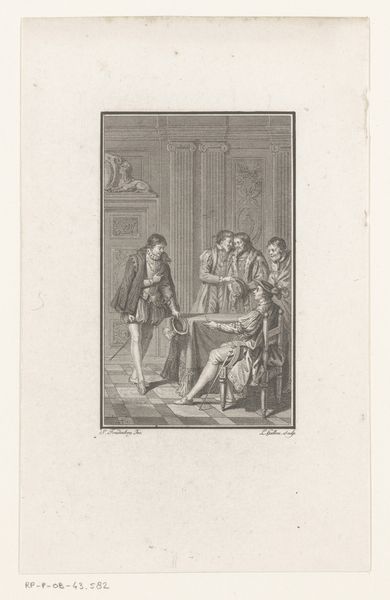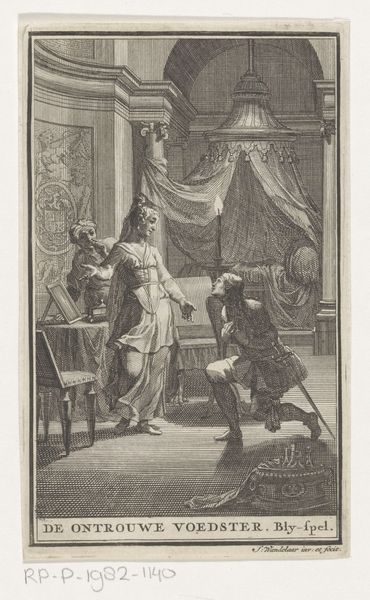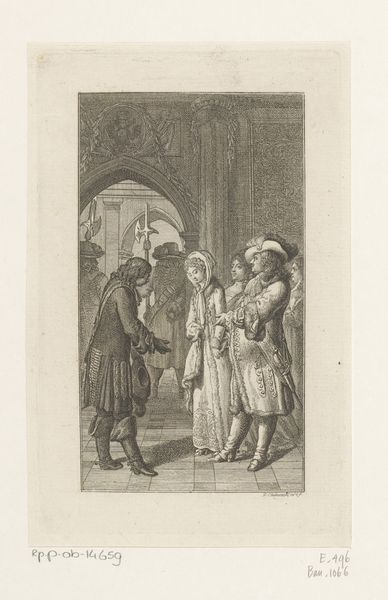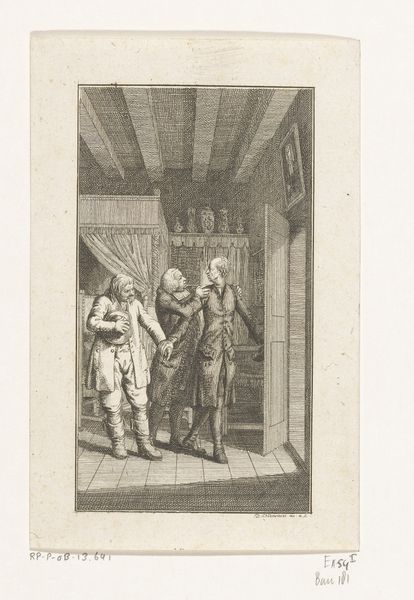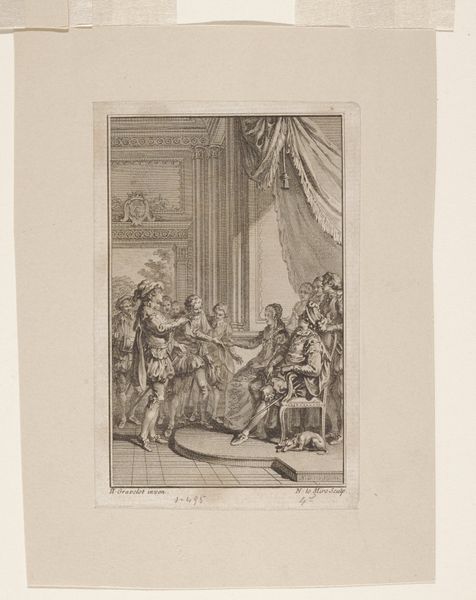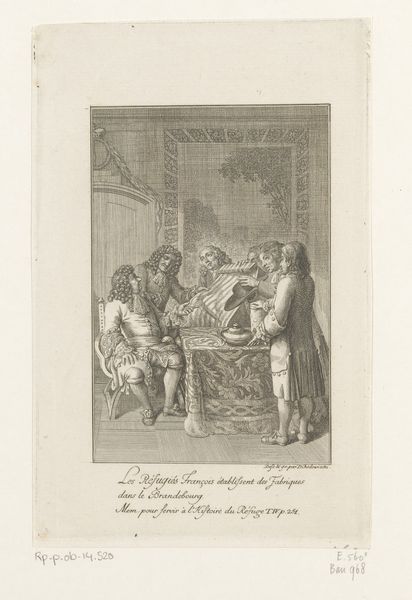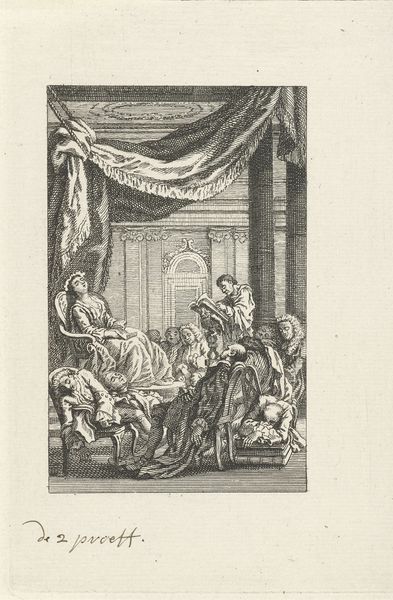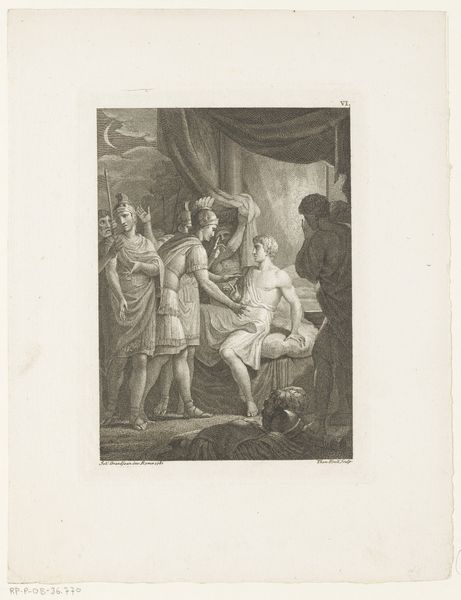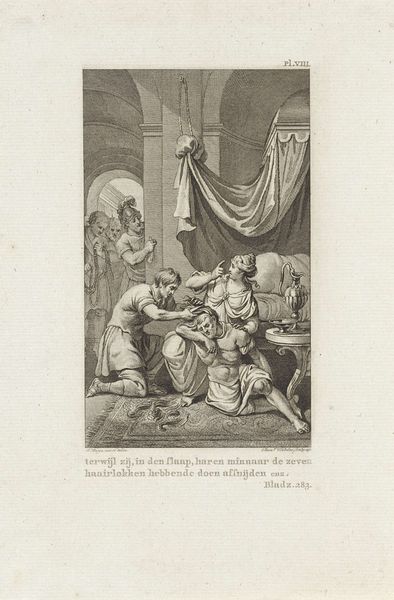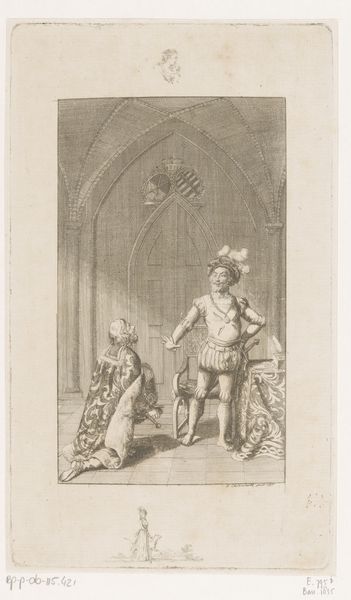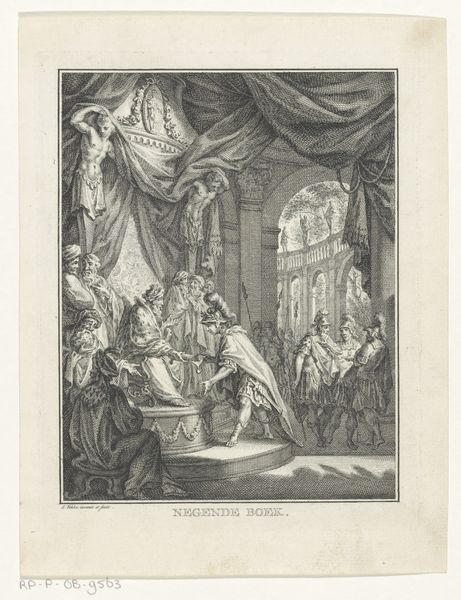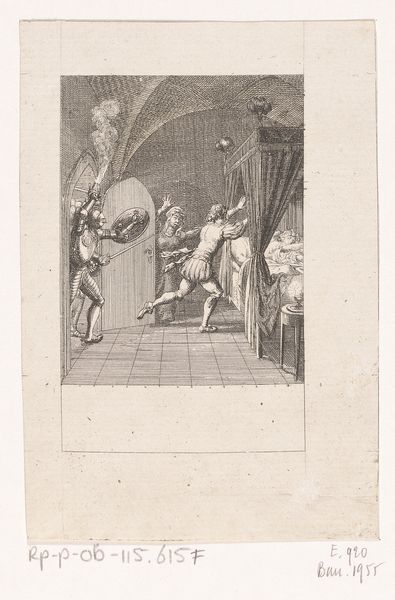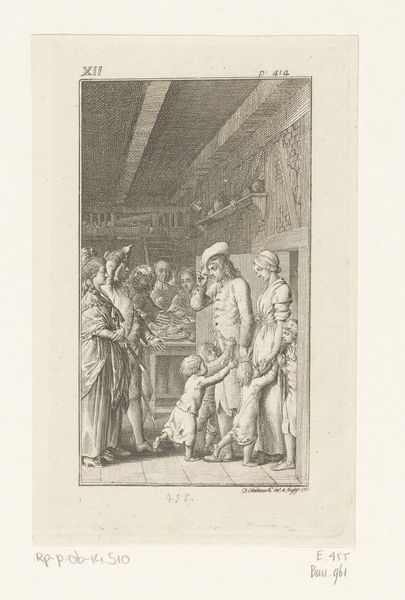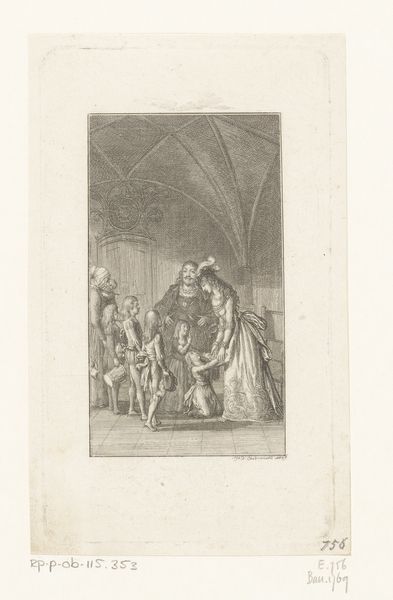
Dimensions: height 206 mm, width 134 mm
Copyright: Rijks Museum: Open Domain
Curator: Considering Chodowiecki’s “Lodewijk de Vrome en de strijd van zijn zonen” from 1784, rendered meticulously as an engraving, what immediately captures your attention about its materiality? Editor: Well, first off, it’s at the Rijksmuseum. Looking at it, it’s got a very staged feeling. The scene seems theatrical, almost. I'm curious about the narrative. How do you interpret this work? Curator: As a print, this engraving becomes endlessly reproducible, spreading a specific depiction of power, conflict and masculinity far beyond its initial creation. Chodowiecki, like other printmakers, facilitated a democratisation of imagery. Who could afford this image, and what social meaning did this engraving possess within a rapidly changing society? Editor: That's a good point about democratization and social context. The ability to reproduce this image cheaply for distribution clearly shaped how its message reached the masses, versus a painting only viewed by few elites. But do you think the artist had a clear idea of exactly who he was reaching, or the effect the prints would really have? Curator: I suspect the market dictated a degree of both message and accessibility. Engravings relied on a robust system of workshops, publishers, and distributors. We must consider these power dynamics that contributed to this work's material existence. It wasn't just Chodowiecki's vision, but an interplay of economic factors at play. Does knowing about this kind of process change your perception of the artwork? Editor: Absolutely, seeing it as a product of its time – a manufactured object, really – rather than solely an artistic expression makes it more thought-provoking. Curator: Precisely. It's about unraveling the complex networks through which images acquire cultural significance, revealing who holds the power in constructing historical narratives through art. Editor: I'll certainly think about the production process differently from now on. Thanks!
Comments
No comments
Be the first to comment and join the conversation on the ultimate creative platform.
